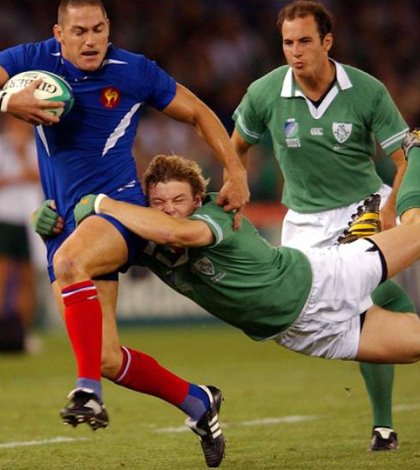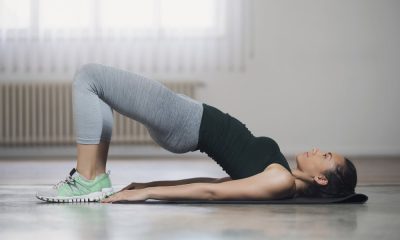Rugby players seek to build muscle for a variety of reasons perhaps to tackle harder, push with more intensity, increase strength and endurance or to have more physical power in a ruck or scrum. Or they may want to run faster, increase recovery after a game, play harder and with more strength than ever before. Much of the training that many rugby players do is not productive. By that I mean that muscle building for a rugby player needs to be demonstrable rather than just cosmetic.
Having the biggest muscles on the pitch is not going to make you, by itself, a better player. However, having bigger stronger muscles than you currently have, especially if you have developed the correct muscles can significantly improve your “on pitch” performance.
For rugby you need to work on your main muscle groups with a view to developing explosive power. Doing set after set with light to moderate weights will do little to improve your performance levels, but doing intense exercises that target your legs, back, shoulders etc., if done correctly will produce amazing results. These intense exercises do not necessarily need to be based solely on lifting weights. The key is “resistance” high intensity resistance. This can be achieved in a number of ways ranging from dragging tyres across a field, to running while carrying your team mates, to weighted dips, press ups and chin ups. The possibilities are endless but the key to tangible muscle growth in them all is intensity and DO NOT over train. Over training can be as bad for muscle growth as not training at all. Let your body fully recover after training before training the next time if you really want to maximise your muscle growth.
The key to all Rugby Training, as with training for any sport is that the training should improve your performance when in real match conditions. For every sport there will be people who excel at training sessions yet cannot put the training into practice in a match. In rugby you will often see people who are very skilled at mastering complex training passing movements, but when match time arrives they cannot adapt what they have learned onto the pitch.
The nature of the game of rugby means that you have short bursts of very high intensity followed by periods of lower intensity. This being the case, it would seem logical that High Intensity Interval Training was the basis of any training protocol, both for fitness and of course muscle building.
The Tabata method of High Intensity Interval Training has been used successfully for years for fitness. It involves a 20 second burst of maximum intensity followed by a 10 second recovery phase – repeated for seven times. Done correctly this can have the most amazing results. For rugby training this exercise protocol should be adapted to core exercises such as the Squat, Front Squat, Deadlift, Dips etc etc.
To be effective this needs to be done at maximum intensity. After you have finished a set you should be totally burnt out and need several minutes to recover. If you don’t then either the intensity was too low or the weight was too light.
Rugby training done in this way is both safe, effective and fast and the muscle building and associated demonstrable fitness gains associated with it can be quite outstanding.


















